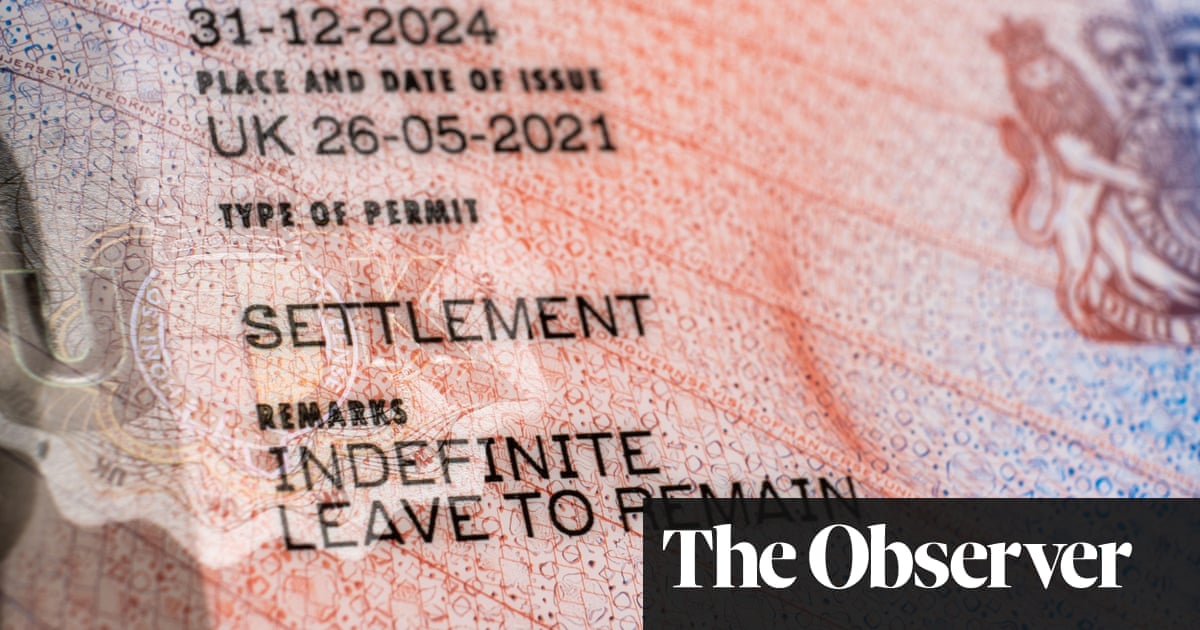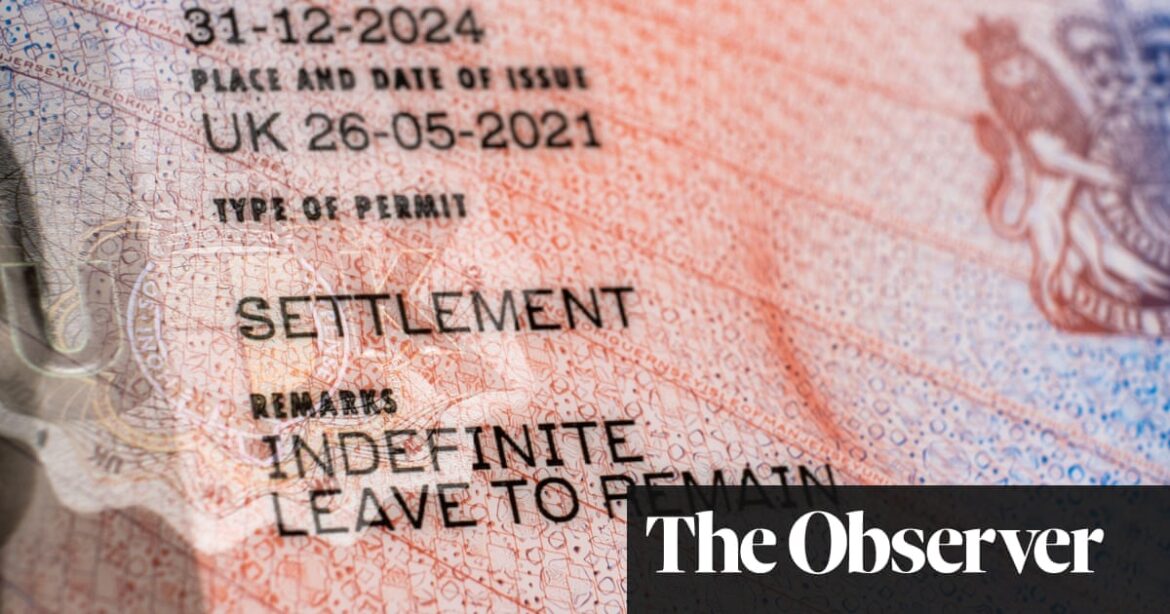
The government is telling migrants who have lived in Britain for decades to provide proof for every year of their residency as part of the controversial transition to digital visas, immigration lawyers have warned.
Under a process that critics say risks a repeat of the Windrush scandal, the Home Office is changing how non-EU migrants prove their residency rights, switching from physical biometric residence permits (BRPs) to digital “eVisas” at the end of this year.
From next year, an eVisa will be required to prove non-EU migrants’ rights to enter and live in Britain, although it does not change their underlying immigration status.
Concerns have already been raised about how the Home Office will inform 4 million BRP holders of the changeover and process their applications to access their eVisas before 31 December.
But the Observer has learned that another group of migrants living in Britain faces an even tougher process. These are people who were granted indefinite leave to remain – which grants the right to live and work in the UK – before BRPs were introduced in 2008. Instead, they rely on the old system of an ink stamp in their passport to prove their residency rights.
The Home Office says they must apply for a BRP before they can get an eVisa. Immigration lawyers warn that the administrative process – called no time limit (NTL) applications – is slow, difficult and could even put them at risk of investigation.
In a recent letter to the Home Office, the Immigration Law Practitioners’ Association (ILPA) raised “significant concerns” over the process. NTL applications can take up to six months and require applicants to prove they have not been outside the country for any period longer than two years – a longer absence would terminate their indefinite leave to remain.
“Expecting [applicants] to provide substantial evidence over decades of their residence in the UK is unreasonable,” the ILPA letter said. “If the Home Office has not kept records of an individual’s travel to and from the UK, that is a failure on the part of the Home Office for which the individual should not be punished.”
Tanya Goldfarb, head of the business immigration team at the law firm Bindmans, said: “People who’ve made the UK their home for almost all of their adult lives, and they’ve lived here for 40 years or 60 years, don’t have paperwork dating back.
“It is prohibitively onerous and striking at individuals who are not necessarily the sort of people that are going to have electronic records of their residences in the past 20 or 30 years. It is going to disproportionately impact certain sectors of society.”
The ILPA’s letter said that senior citizens and those who struggle with technology would be most affected by the need to make an NTL application.
“We are particularly concerned about what the eVisa rollout will mean for people who hold older paper documentation of their immigration status,” said Josephine Whitaker-Yilmaz of migrant rights charity Praxis.
“Because they have been in the UK for so long, they may have no idea that they will also be affected by this process of digitisation. Despite Home Office estimates suggesting that there might be as many as 200,000 people in this group, we’re yet to see any evidence of a communications strategy designed to reach them.”
The Home Office said that migrant residents who have indefinite leave to remain but no BRP should apply via the NTL route as soon as possible.
after newsletter promotion
Sarah (not her real name), who was granted indefinite leave to remain in 1983, only found out about the transition to eVisas after reading an Observer article in May.
“In some cases, there’s a gap of a number of years between my passports because I didn’t travel in that time,” she said. “I did do a few trips outside the UK, but just short trips.”
In addition, her passport was not always stamped when she left the UK, but was always stamped when she returned. “There’s an incomplete record in my passport of time out of the UK. So I’ve had to look for ways of proving when that trip was.”
Having been a stay-at-home parent and also suffered ill health, she has employment gaps of more than two years recorded with HM Revenue and Customs.
She said: “I have been paid child benefits so I’m writing to different departments to see what information they can send me. Because, obviously, I’ve not got the booklet stubs from the 1980s, 1990s that I can photocopy to send. And I’ve also requested my medical records.
“But I don’t know whether these documents will be acceptable to the Home Office in proving my residency.”
The impact of the 31 December deadline on people without BRPs or eVisas will probably be felt mostly by those travelling outside the country, according to Goldfarb.
She said: “Come 1 January 2025, when people are coming back from their winter family vacations, the optics of airports, or airlines, just systematically not allowing people back into the country is frightening and is going to be incredibly frustrating.”
Source: theguardian.com



